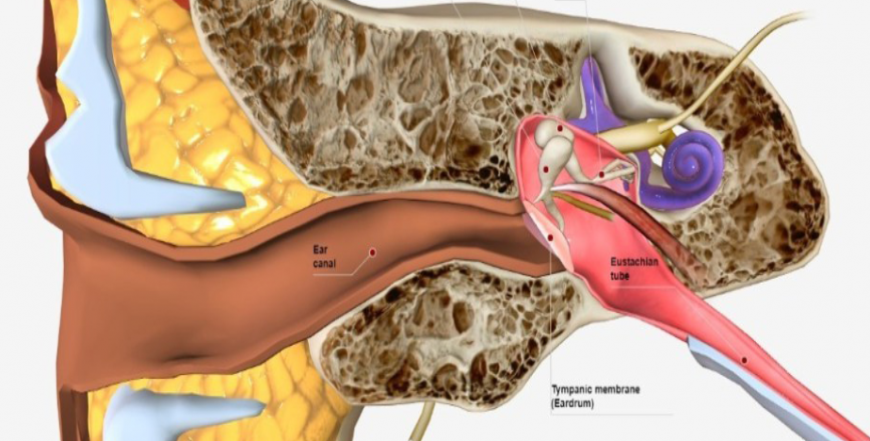
Glue-Ear
WHAT IS OTITIS MEDIA?
Otitis media with effusion usually known as glue ear is the most common cause of temporary hearing problems in babies and young children. It is usually caused by bacterial or viral infections affecting the upper respiratory tract, problems with the tonsils and adenoids, allergies, or genetic conditions.
Inflammation occurs when bacteria becomes trapped in the Eustachian Tube or Middle Ear cavity. The inflammation may cause mucous to be secreted into the middle ear. Sometimes, the fluid becomes trapped behind the eardrum, in the middle ear cavity, in a condition known as otitis media with effusion or more commonly, “glue ear”.
The pressure from the fluid buildup may cause the eardrum to rupture and the fluid to discharge from the ear canal. Most children will experience at least one episode of otitis media by the time they start school. Hearing loss resulting from middle ear disorders may fluctuate, resulting in inconsistent listening behavior.
How The Middle Ear Works?
The middle ear is connected to the back of the nose by the Eustachian tube. This tube opens to allow pressure in the middle ear to equalise. If the Eustachian tube is not working properly, or is blocked, fluid is secreted into the middle ear space. Over time, this fluid can become thick, like egg-white, a condition commonly called “glue ear”.
Effects On Hearing
When the middle ear becomes blocked, it is unable to effectively transmit sound vibrations to the inner ear. The type of hearing loss referred to as CONDUCTIVE because sound is prevented from being properly “conducted” through the middle ear space.
Middle ear problems can cause varying degrees of hearing loss up to a moderate degree of loss. The hearing loss may impact on speech and language development, behaviour, and learning, if it is not treated.
Recognise The Symptoms Of Otitis Media With Effusion?
A child with ongoing otitis media with effusion may display the following signs:
- Recurrent ear infections.
- Pain associated with the ear.
- Pulling or scratching of ears.
- Frequent colds or upper respiratory problems.
- Breathing through the mouth.
- Appears to ignore, or is less responsive to sound.
- Irritability or behavioral problems.
- Delayed speech and language development.
- Concentration/learning difficulties at school.
- Speaks loudly, shouts.
- Turns TV/stereo volume up.
- Watch people’s face intently, and ask for repeats.
Investigations
An audiologist may use some of the following tests to check
for middle ear problems and hearing loss in young children.
Impedance Audiometry/Tympanometry
A quick and painless measure of the function of the middle ear system.
Play Audiometry
A listening game to check hearing acuity. 3yrs+
Visual Reinforcement Audiometry (Vra)
A fun test using puppets that checks a toddlers hearing acuity 9months to around 3yr+
Otoacoustic Emissions (Oae)
A very quick test of the cochlea or inner ear function which does not require any behavioral responses from the child.
Managing Otitis Media
Management can depend on the symptoms and severity of the condition. This should be discussed with your GP or ENT Consultant.
Treatment May Include:
- Antibiotics – treatment of bacterial infections
- Pain relief – appropriate analgesics as recommended by your GP.
- Antihistamines/Decongestants – Reduce swelling of the Eustachian Tube to allow fluid to drain
- Corticosteroids – Act directly to reduce inflammation
- Ventilation Tubes/Grommets – Inserted into the ear drum to allow the fluid to drain via the ear canal while the Eustachian Tube is not functioning adequately.
